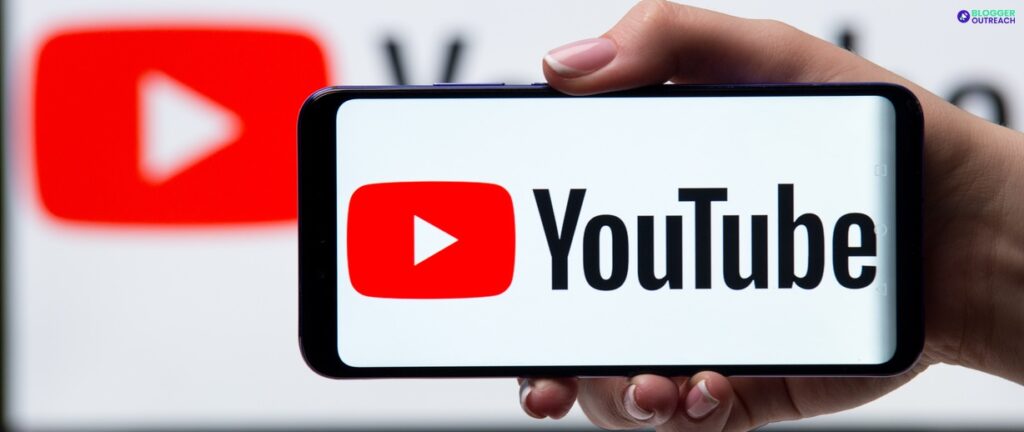BLOGS require consistency!
Consistency comes with a continuous flow of content creation. Right? Generally, we recommend that our clients post one blog per day.
Here comes the million-dollar question:
How to come up with ONE blog idea daily? What are the secrets that keep you moving? Is it possible to generate endless content ideas?
Hold on!
What if we tell you that you can post content regularly?
Yes. There are ways to avoid running short of content ideas. Once you know these tactics, you’ll become a content machine.
Worry no more! We have vetted and created a comprehensive guide on the same. Go through these 15 strategies.
We are pretty sure that if you diligently follow these tactics, your BLOG strategy will soar.
Table Of Content
15 Smart Hacks To Find New Content Ideas
How to find content ideas? Here are they:
1. Identify Content Gaps Through Competitor Analysis

Analyzing competitors is an essential part of any form of digital marketing. Blogging is no exception. Keeping a close eye on the competitors gives you a clear picture.
Please note that we do not suggest you steal or plagiarize their content.
Use their titles and concepts as a starting point for your own unique ideas.
Identify the topics that your competitor has covered. However, you haven’t. Go to any SEO tool and see the potential of the keyword mentioned in the topic. If you missed any, add it.
Check out your competitors’ blog titles and headlines. Often, these titles are carefully crafted to attract readers and generate interest.
Examining your niche’s topics lets you see which ones are grabbing attention. Creating original content that adds value to your audience can spark ideas for your own blog posts.
Take note of the concepts or themes your competitors are exploring.
Are there any recurring topics or trends that seem popular among their readers? It can provide valuable insights into your target audience’s interests.
Don’t copy mindlessly. These ideas can be a springboard for your unique perspectives and expertise.
2. YouTube Videos

Think of YouTube as a Google search for content ideas. In the YouTube search bar, suggestions appear as you type. Popular searches can give you an idea of what people are interested in.
For example, let’s say you run a fitness blog and you want to write an article about effective ab workouts.
You can start typing “ab workouts” in the YouTube search bar, and you’ll see suggestions like “STOP doing ab workouts,” “Why Ab Workouts Are Pointless,” or “10 MIN BEGINNER AB WORKOUT // No Equipment.”

Now, let’s move on to the sidebar of a YouTube video. On YouTube, you’ll see a column on the right side of the screen. There is a column called the sidebar that contains related videos.
Continuing with our fitness blog example, let’s say you’re watching a video about a high-intensity ab workout. In the sidebar, you’ll find other videos related to ab workouts or fitness in general.

For instance, you might find a video titled “10-minute ab workout for busy professionals” or “Advanced ab exercises for a stronger core.” You can gain inspiration and incorporate unique perspectives or exercises into your blog articles by watching these videos.
3. Pay Attention To Social Media Discussion

In the current era, social media is where people participate in discussions.
Platforms like Twitter, Facebook, and LinkedIn provide a wealth of information. You can generate content ideas from these discussions.
Let’s dive deeper into this strategy.
Imagine you run a blog about technology and gadgets. When you pay heed to social listening, you can gain valuable insights into the following:
- What are people talking about?
- What interests them?
- What challenges do they face in the tech world?
Next? Hashtags!
Keep an eye on hashtags related to technology. #technews, #gadgets, and #innovation can spark ongoing discussions. See what people share, discuss, or ask about. Pay attention to patterns or recurring themes.
Discovering popular conversations on Facebook is also easy. Become a member of relevant groups or communities. Engage with community members by reading their posts. Keep track of topics that generate a lot of engagement.
You can also have unique insights into industry-specific discussions and trends from LinkedIn. Follow influential thought leaders in your niche. Pay attention to articles, posts, and comments that get a lot of attention.
4. Topic Idea Generator Platform
You can spark your creativity with topic-generator platforms. One popular platform for generating blog topics is HubSpot. Let us explain how it works, and we will share some other examples.
HubSpot’s topic generator tool is designed to help you generate blog ideas based on a general topic or keyword. Here’s how you can use it:

- Visit HubSpot’s website and navigate to their blog topic generator tool.
- Enter a relevant keyword or topic related to your blog niche or industry.
- Click the “Add” or a similar button to generate a list of blog ideas.
Now, let’s talk about a few other blog topic generator platforms you can explore:
Portent’s Content Idea Generator: It generates catchy and creative blog titles based on a keyword or topic. A brief explanation accompanies each suggestion, so you can better understand the context.

SEMrush Topic Research: The topic research tool in SEMrush is a valuable resource for generating blog content ideas. Subtopics, headlines, and questions are listed, helping you uncover various angles to explore in your blog post.

5. Explore Quora And Reddit

Various topics can be discussed on Quora and Reddit. Millions of active users make their communities excellent sources for finding relevant and trending topics.
Find subreddits and threads related to your blog’s niche. For example, if your blog is about fitness, you might look for subreddits like r/fitness or r/weightlifting on Reddit.
Browse through the discussions and questions in the relevant subreddit or Quora thread. Look for common themes, recurring problems, or popular questions. Your target audience will likely respond well to these topics in your blog.
For instance, while exploring a fitness subreddit, you might come across questions like, “What are the best exercises to lose belly fat?” or “How can I stay motivated to work out regularly?” Find this topic’s specific pain points and interests of this topic and address those through your content.
Look for discussions that have received the most upvotes or engagement. This will also give you content ideas.
Read the comments and responses on these platforms. A user’s perspective, personal experience, or alternative perspective can enrich your understanding.
You can add depth and credibility to your blog posts using these insights.
6. Leverage Keyword Research Tools

You can find topics that appeal to your readers with keyword research tools.
For instance, let’s take the example of Google Keyword Planner. You will need a Google Ads account to start with Google Keyword Planner.
This platform is free to sign up. You can use the Keyword Planner once you have access. Based on your keywords, the tool will generate a list of related keywords, their search volume, and their competition level.
For example, let’s say your blog is about gardening. You can enter keywords like “organic gardening,” “flower gardening,” or “vegetable gardening” into the Keyword Planner. Your blog post topic can be inspired by these keyword suggestions, such as “how to start an organic garden,” “best flowers for beginners,” or “tips for growing tomatoes.”
Once you’ve gathered keywords and topic ideas, it’s time to brainstorm blog posts. Consider each keyword’s search intent. When people search for those terms, what are they looking for?
Followed the above process? We are sure that you have got some content ideas.
NOTE: You should always check the keyword’s volume, relevance, and difficulty level before selecting it.
7. Analyze Your Website Analytics

Website analytics for content ideas? How’s that work?
Digging into our website analytics is a surefire way to generate content ideas. Here is how it works.
Step-1: Analyze your website with a reliable tool like Google Analytics. Your website visitors’ search terms can be collected with this tool.
Step-2: Navigate to the section in your analytics tool that shows the search terms people used to find your site.
Step-3: Search for keywords or phrases related to your website’s niche or topics. Choose keywords with a decent search volume.
Step-4: Identify and expand on popular topics to create engaging blog posts. Consider the questions, problems, or interests your audience might have.
For example, if your website is about SEO and you notice that “best SEO tips” is a popular search term, you could create a blog post titled “10 best SEO tips for digital marketers”.
Step-5: The next step is to brainstorm blog posts using the keywords you found in keyword research. Consider different angles, formats, and perspectives. For more engaging and informative blog posts, include case studies, expert interviews, step-by-step guides, or personal stories.
8. Take Advantage Of Google Auto Suggest
How to explore topic ideas through Google Auto Suggest? Here is how to go:
Brainstorm a broad topic related to your blog’s niche. For example, if you run a fitness blog, you could start with “healthy recipes.“
- Enter Your Topic Into Google: Observe the auto-suggestions that appear when you type your broad topic into Google. Below the search bar, these suggestions are displayed in a dropdown menu.
- Explore The Suggestions: See if any of the auto-suggestions grab your attention. Since these suggestions are based on real user queries, they provide valuable insight into people’s interests.
Continuing the previous example, you might find suggestions like:
“healthy recipes with oats“
“healthy recipes for weight loss.“
“healthy recipes for kids.”

- Expand On The Suggestions: Based on the suggestions, you can focus on a specific aspect. For instance, you could narrow your topic to “10 healthy recipes for weight loss” or “5 easy and quick healthy recipes for busy individuals.”
9. Read Industry News

With your finger on the pulse of your industry, you’re at the forefront of what’s happening.
So how exactly do I go about it? Here’s how:
Your blog should focus on a specific industry or field. Understand your niche, whether it’s technology, fashion, health, or finance.
Identify and follow reliable news sources that cater to your industry once your niche is locked down. Online forums, blogs, magazines, and industry-specific websites may exist.
Set up news alerts or subscribe to newsletters from relevant publications to avoid missing important updates. This way, you’ll receive regular updates directly in your inbox or via notifications.
Pay attention to headlines and article titles in the news. These can serve as blog topics or spark ideas. Provide your unique perspective or insight.
When you find an interesting article, don’t just skim the surface. Discover the key points by diving deeper into the content. As a result, you can produce more valuable and informative blog posts.
Remember that you are not just a passive consumer of news. Your blog is also an opportunity for you to showcase your expertise in your field as you are an expert.
As you gather information from various news sources, connect the dots between stories and trends. Are there any common themes emerging? Can you analyze and discuss conflicting viewpoints?

Google is prioritizing first-hand experience. And without the rollout of E-E-A-T (expertise, experience, authoritativeness, and trust), it is much more evident.
Describe your own professional experiences. A project you worked on presented unique challenges or a problem you solved. Or, you could share specific instances or scenarios that stand out in your memory. Consider what you learned, what skills you acquired, or what insights you gained.
Whether it’s technical aspects, professional development, or even personal growth.
Set the stage by providing relevant background information.
Follow your readers on your journey. What steps did you take, what obstacles did you encounter, and what strategies did you employ?
Be honest and authentic in your storytelling.
Reflect on the key takeaways from your experience and explain how your readers can apply them. What insights or skills did you gain? How can others benefit from your learnings?
Provide practical tips in your blog posts. Strategies or techniques you used to overcome challenges. Actionable steps will appeal to your readers.
11. Tap Into Burning Topics

What’s taking the internet by storm?
For example. The current hot topic is AI content, especially ChatGPT.
You’ll see current discussions, trends, and controversies throughout the year. You need to pay hed to those for content ideas.
Respect and sensitivity are essential when discussing controversial topics. Maintain a balanced perspective to avoid alienating your readers.
Remember to cite your sources and provide links for further reading, allowing your readers to explore the topic more deeply.
Creating a safe and respectful space for your readers to share their opinions is important.
Communicate your blog’s commenting policy and moderate the discussion to prevent abuse. Encourage readers to share their thoughts and be responsive to their comments to foster an active community around your blog.
It is crucial to create a safe and respectful space for your readers to share their opinions doing such situations gracefully and professionally. Engage in thoughtful conversations, always focusing on the topic.
12. Create “best of” Or “top X” Lists

What topics or categories would be most relevant and interesting to your audience?
For example, if you run a fitness blog, you could create a “top 10 workout routines for weight loss” list or a “best fitness apps for tracking progress” list.
Creating a safe and respectful space for your readers to share their opinions on the sources is important to ensure you feature reputable content.
Creating a safe and respectful space for your readers to share their opinion is important.
A “top 5” list may suit a narrower category, while a “top 20” list could work for a broader subject.
Linking to original sources is crucial. Readers can explore further, and access featured content directly.
13. Collaborate With Other Bloggers

Like-minded people can give you content ideas – who else than bloggers?
Find bloggers in your niche. As a result, their perspective will resonate with your audience.
One way to reach out to them is by sending an email. Send a personalized email, and talk about things that pique their interest.
Showing you’ve done your research on their blog establishes a genuine connection.
Consider guest posting or collaborating on a blog post. Depending on the topic, you might each contribute a section.
Topics where you have complementary knowledge or expertise. Create engaging and informative content. If you blog about food, you could collaborate with a fitness blogger.
Ask your fellow bloggers if they have any specific topics they’d like to explore or if there are any gaps in their content that you can fill. This can help spark new ideas and lead to fruitful collaborations.
Decide on a topic and divide the work. Multiple authors often contribute to collaborative blog posts. Clarify content length, formatting, and any other requirements.
Keep in touch with your collaborator through email, video calls, or collaboration platforms. You can bounce ideas off one another, provide feedback, and ensure the final piece aligns with your vision.
14. Address Frequently Asked Questions

First, keeping track of the common questions you receive from your audience or customers is essential.
This can be done through various means, such as:
- Monitoring customer inquiries.
- Reviewing comments on your blog or social media channels.
- Conducting surveys.
- Even engaging in direct conversations with your audience.
Your blog posts can be based on a list of frequently asked questions. Each question can be turned into a blog post. Provide comprehensive and detailed answers to your readers’ questions in your blog.
For instance, let’s say you run a fitness blog, and one of the common questions you receive is, “What are the best exercises to lose belly fat?” You can turn this question into a blog post, “The Ultimate Guide to Losing Belly Fat: Top Exercises and Tips.” In this blog post, you can discuss various exercises, provide step-by-step instructions, offer additional tips for faster results, and even include success stories or before-and-after pictures.
15. Product Reviews

Consider recent products you’ve used related to your brand. Start with these products to create engaging content for your audience.
Suppose you run a tech blog and recently got a new smartphone. Write a detailed review of the smartphone using this experience. Discuss its features, pros, and cons by sharing your first impressions. Visually appealing and interactive, your review can include photos or even a video demonstration.
Another idea is to explore different use cases or scenarios related to the product.
If you’re reviewing a kitchen appliance, you can write a blog post about how it can enhance or simplify recipes or cooking techniques. You’re giving your readers practical tips and ideas while reviewing a product.
In addition to reviews, you can create comparisons and buying guides. Your audience can learn more about the unique features of different skincare products and makeup brushes if you write a blog post about them.
Stand out With Your Content Ideas
Come up with content ideas that solve a problem. And then tailor your content that addresses the problem.
Consider these 15 points and start looking for engaging content ideas.
Wait! Are you someone who lacks the time to generate content ideas? A content writing agency can provide you with content suggestions in such a case.
That’s all for today. See you in the next article.
Read Also:









